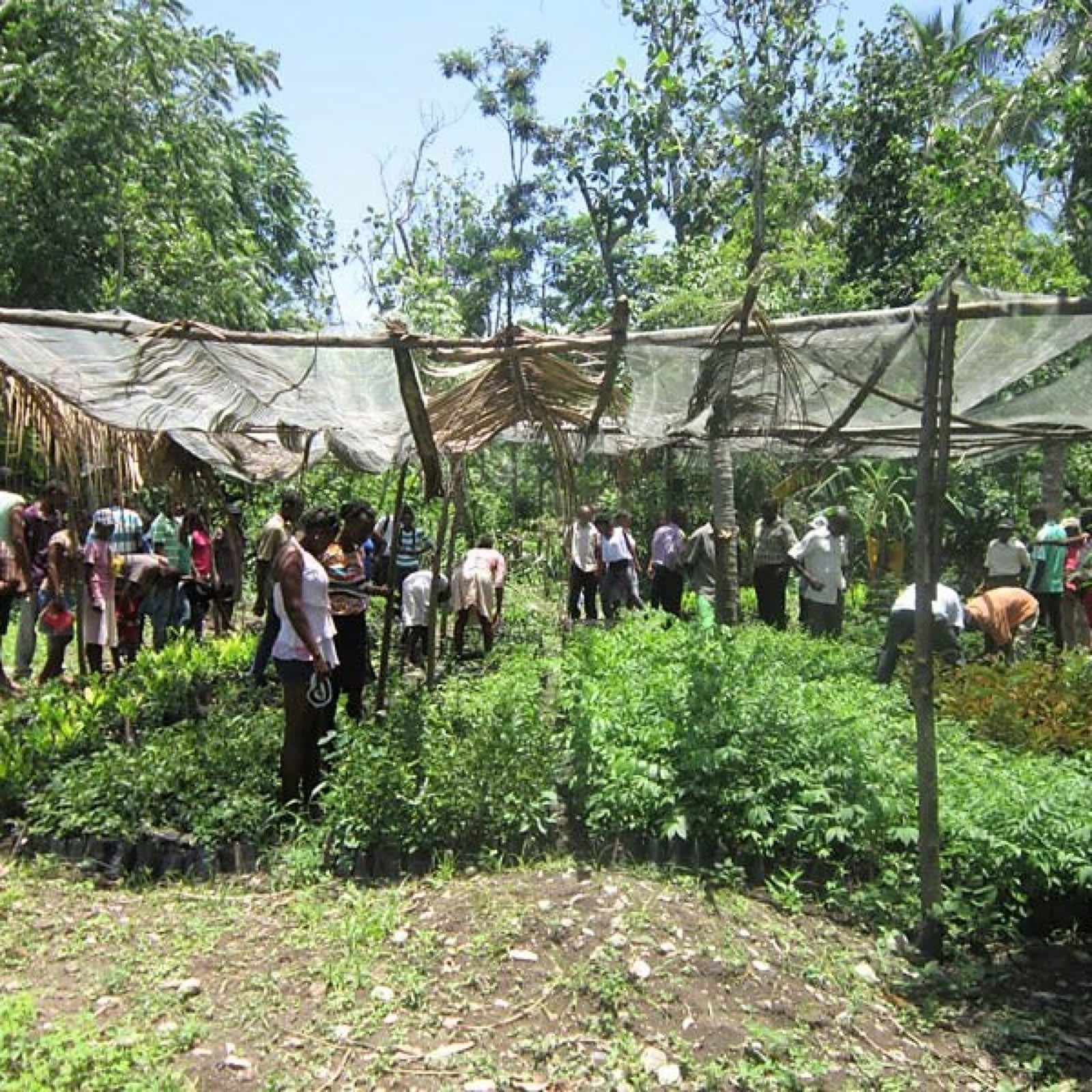











We can grow trees year round in the tree nursery, watering them and keeping them shaded through the dry season, but we distribute great numbers of fruit trees in September – February to take advantage of the cool season and rainy season coming in March. The survival rate of our fruit trees is very high.
When we plant on mountain tops, the seedlings must be watered regularly for at least 6 months to survive, this manual labor becomes very costly.

Around Cavaillon in about a 20 mile radius, people grow trees now as a habit. Tree seedlings are part of home gardens. churches, schools, and local organizations all grow seedlings as part of their routine. These practices were not seen 10 years ago.
Over the last 50 years the culture in the area has been to cut trees without replanting but thanks to this project, people have stopped to rethink their actions and have begun to plant more than they cut.

This project is ForestNation Certified, which means: